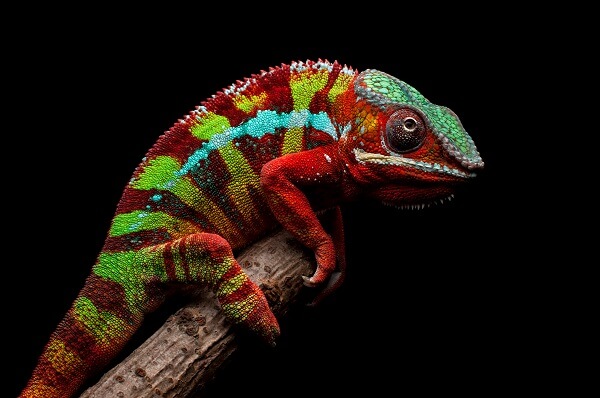Chameleons are a fascinating species of reptiles known for their unique ability to change the color and pattern of their skin. They are native to Africa, Madagascar, and some parts of Asia, and are popular as pets around the world. In this article, we’ll explore the characteristics, behavior, and habitat of Chameleons.

Chameleons are known for their distinctive physical features, such as their long, prehensile tail, independently rotating eyes, and zygodactylous feet. Their skin contains specialized pigment cells called chromatophores, which enable them to change color in response to environmental stimuli such as temperature, light, and social interaction. Chameleons are also arboreal, meaning they live and hunt in trees, and have specialized grasping feet and a long tongue for catching insects.

Chameleons are solitary creatures that are known for their slow and deliberate movements. They spend most of their time basking in the sun or hiding in the shade, and are highly territorial. Male chameleons use color displays and physical posturing to communicate with each other and establish dominance, while females are less colorful and more passive. Chameleons are also capable of rapid and precise movements when hunting or defending themselves, and can shoot their tongue out at lightning speeds to catch prey.

Chameleons are found in a variety of habitats, from tropical rainforests to arid deserts. They are most commonly found in trees and bushes, where they can blend in with their surroundings and hide from predators. Some species of Chameleons, such as the Pygmy Chameleon, are adapted to live on the ground and are more terrestrial. Chameleons are also sensitive to changes in temperature, humidity, and light, and require specific environmental conditions to thrive in captivity.
Chameleons are popular as pets due to their unique appearance and behavior. However, they require specialized care and can be difficult to keep in captivity. Proper housing, temperature, and humidity levels are essential for the health and well-being of Chameleons, as well as a varied diet consisting of live insects and plants. Chameleons are also prone to stress and can become aggressive if not handled properly.

Several species of Chameleons are listed as endangered or vulnerable due to habitat loss, poaching, and the illegal pet trade. Conservation efforts are underway to protect and preserve these unique creatures, such as habitat restoration, breeding programs, and education initiatives.
Chameleons are a fascinating and unique species of reptiles known for their color-changing ability, arboreal nature, and specialized physical features. Whether as pets or in the wild, Chameleons require specific care and environmental conditions to thrive. Conservation efforts are essential to protect and preserve these remarkable creatures for future generations to appreciate and enjoy.








